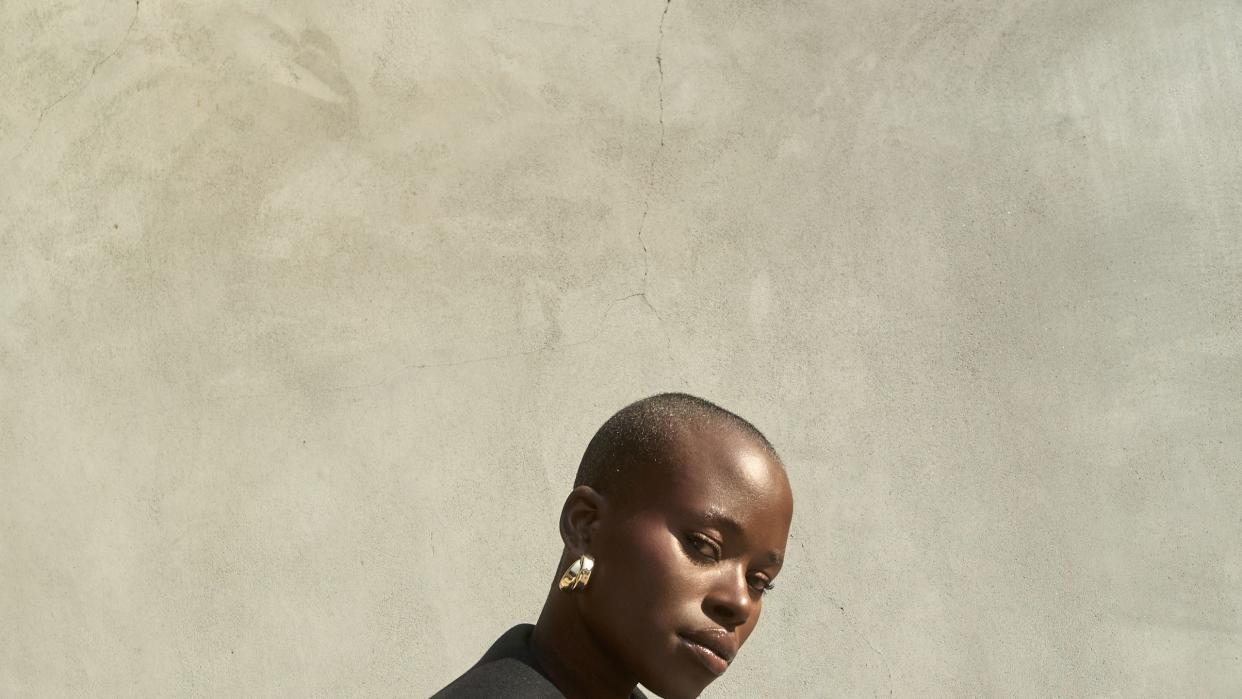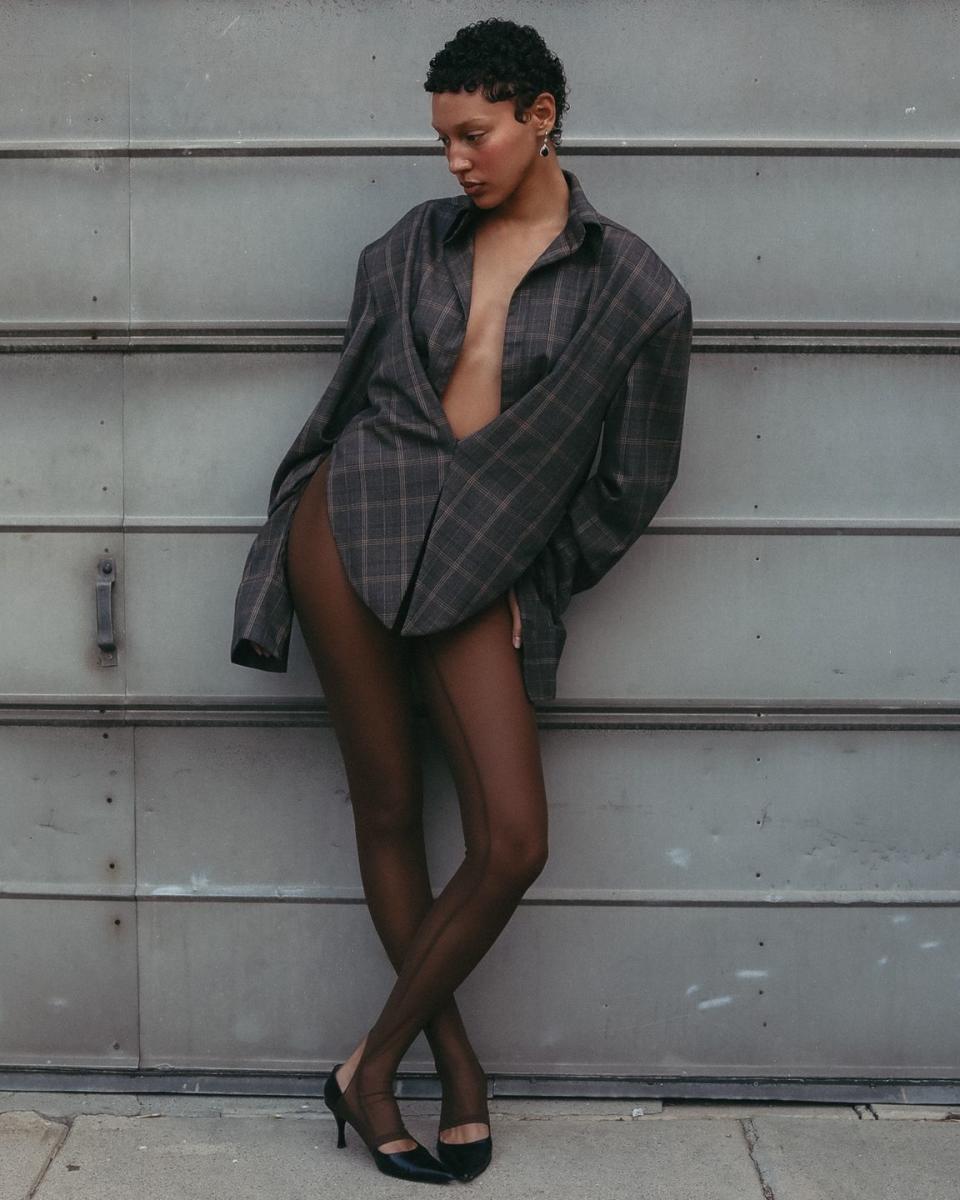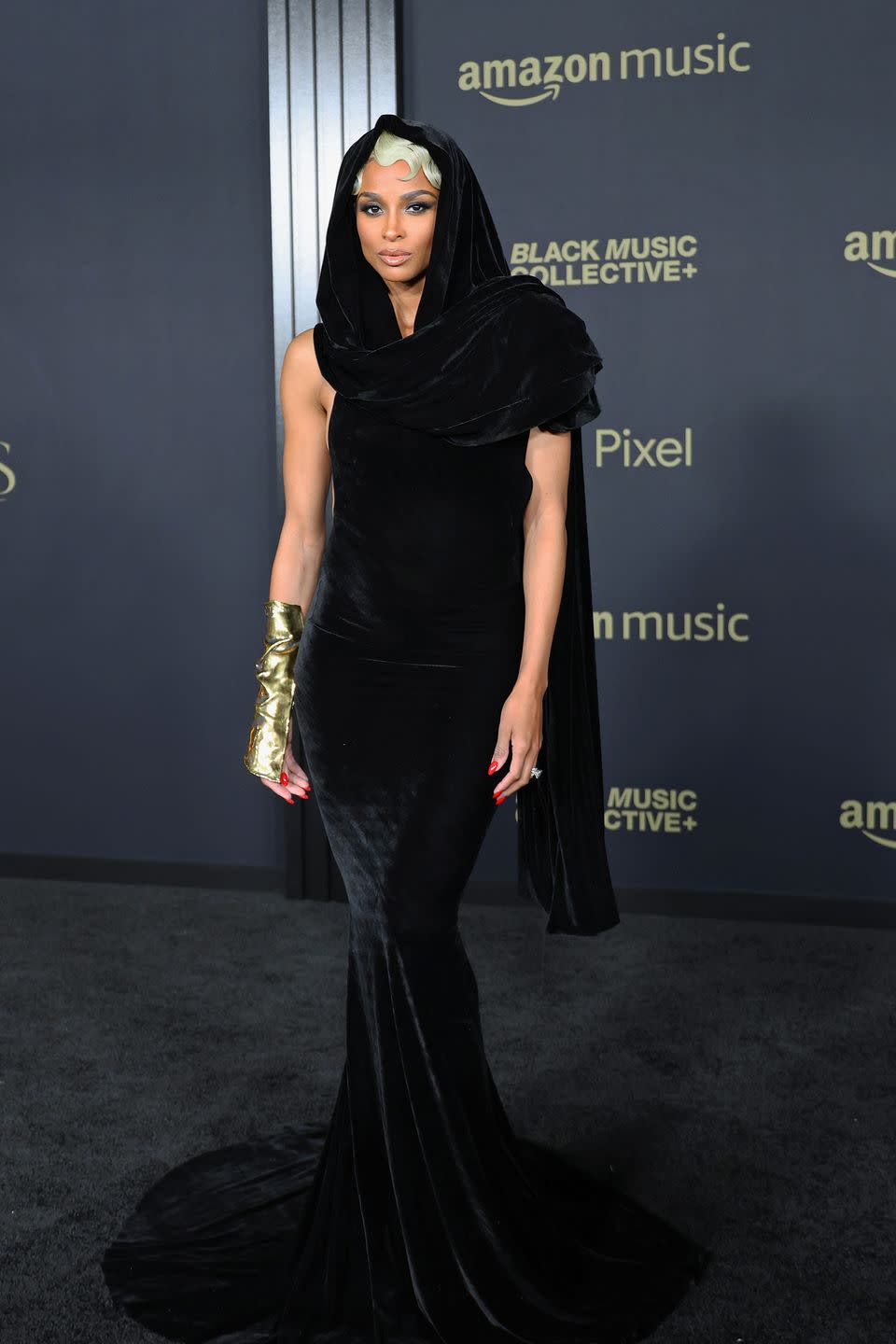The Designer Bringing a Distinctly Ghanaian Perspective to L.A.

Kwame Adusei is very open about his feelings regarding waste. “I don’t want to make pieces that people would just buy because they think they look cool, and then they discard it after a season,” he tells me when we chat over the phone in mid-February. Without naming names, he adds, “I’m sure you know a lot of brands like that—they just design it based on the fact that it [looks] really cool … because that’s what happens all the time, right?”
There’s no denying the pieces constructed by the Ghanaian designer do look cool. In fact, his chic habiliments have caught the attention of many of today’s Hollywood It girls, from Kylie Jenner and singer-songwriter Kali Uchis to Ciara and Lori Harvey—all of whom have worn Kwame Adusei pieces on social media, red carpets, and elsewhere. What likely draws these celebrities to the designs, though, is not just that they’re undeniably unique, but also that they’re made to last.
“For me, sustainability is having a peace for forever,” Adusei says. It’s a sentiment that may sound simple, but still feels revolutionary when so many garments continue to end up in landfills—something Adusei knows all too well, given that he grew up seeing junk piles around his hometown. “If you see those kids from the National Geographic channel that were just playing on a landfill with no shirt on—yeah, that was me,” he says frankly. “But don’t get me wrong; I’m not selling a sad story.”
Adusei’s story is actually one of serendipity and communion. Despite a fascination with clothing trends throughout his childhood, the visionary didn’t intend to enter the industry—at least not on the design side. While he had dreams of becoming a basketball player, he first tried to make it as a model. Then one year, after he’d started a fundraiser to provide new clothes to a local orphanage, he found himself falling in love with fashion design.

Before he knew it, he was designing clothes for what would forever be his toughest critics: his sisters. “They [were] like, ‘Who’s going to wear this? This is ugly,’” he humorously recounts. And while it might sound harsh, Adusei says these critiques helped shaped him and improve his work, teaching him what design was really about: “For a fashion line to be successful, you need that skinny cousin, you need that curvy niece, you know, and you need to make clothes for all of them.”
Adusei unveiled his first label, Ćharlotte Privé, in the early 2010s, before eventually launching his namesake brand in 2022. Now, nearly 15 years into his career, he doesn’t just want to make clothes that people keep, he wants to make clothes that buyers will struggle to ever part with. According to him, shoppers should want to wear pieces until they can see holes in them. “It’s like you love it so much that you can’t even get rid of it even if you wanted to.”
Funnily enough, many of Adusei’s designs already do come with holes—large slits and cutouts, or unusual lines of buttons that allow the wearer to bare their navel or their back. There’s a subtle sexiness to his designs because they bridge the gap between something you might wear to the office versus something you might wear on a night out with friends. He clearly enjoys breaking the rules and strict categorization of fashion, and the result is thrilling.

Take a glance through the Kwame Adusei store and you’ll find blazers with slouchy oversize cuts and soft patterns that make them look like comfy flannels you toss on after rolling out of bed. He gives his sweatpants a wide-legged bottom hem that would indicate they were sharp dress slacks if you didn’t glance twice. And what might begin as a breezy beach button-up becomes a dynamic knotted mini dress once Kwame’s done with it. Oh, and did I mention they’re made with deadstock fabrics?
This unusual approach is quite different from the pieces Adusei made with Ćharlotte Privé, a brand that was characterized by flowing frocks and eye-popping colors and patterns. His artistic pivot can be traced back to March 2020, when he moved to Los Angeles mere weeks before the pandemic struck.
As he sought out an aesthetic change, Adusei began studying the trends he observed throughout the city (at least before everyone started hiding inside). Almost immediately, he recognized that comfort was prevalent, but it manifested differently in the U.S. than it did in Ghana. “If you didn’t grow up in the U.S., you wouldn't find sweatpants the most comfortable thing to wear,” he notes. Yet, across the streets of L.A., he noticed these staples in droves (along with plenty of boyfriend jeans too, he notes).
But besides the focus on comfort, he also recognized that curvy folk, especially women, weren’t being seen or catered to. “What happens is they just end up buying like an oversize male cut and [they] just adjust it to suit the body, especially in L.A.,” he says. As someone who hadn’t originally been designing for Western shoppers, this stuck out to him. “We see most brands only cater for the European body, right?...But because I was born and raised in Ghana, my only form of inspiration or reference is the curves.”
Ultimately, Adusei made it his mission to design clothes that would be comfortable, while also being adaptable to different body types, which meant some radical design choices down the line. “I don’t put seams in my clothing,” he declares. “Most of the clothing doesn’t have side seams, especially our pants.”
It’s true that if you study the Kwame Adusei collections closely, you’ll find very few stitches that constrict the wearer. Instead, the organic silhouettes hug bodies like a second skin—willing to stretch and shrink with the wearer easily. This is another aspect that makes Adusei’s pieces hold up over time, and the seeds of these designs hark back to his birthplace. “I began to understand why I never liked seams,” he says with a laugh. “When you look at our traditional garments from Ghana, like our ceremonial outfits, it’s very much draped, we drape the cloth of fabric—that’s how we express ourselves. So, I ended up gravitating towards something that I didn’t really pay attention to while I was in Ghana.”

Another important feature that Adusei pulls from Ghanaian fashion is androgyny, which he explains is typical among West African clothing. In fact, the word even makes its way into his namesake label’s mission statement, which states the brand is “a culmination of West African roots translated to a global audience with a perspective founded in androgyny, sophistication, and sexuality.”
To be fair, you will find a separate tab for men’s clothing on-site, but if you pay close attention, you’ll see the gender presentation of the models switches up no matter what section you’re scrolling through. In this effort, Adusei is trying to make his pieces approachable to any shopper, and make them feel free to try something new. “The way we’re putting out the pieces, we’re trying to find a very subtle yet very approachable way to just get everybody to be excited about fashion rather than [thinking of it as] male/female clothing,” he says.
With the arrival of the Kwame Adusei pre-Spring/Summer ’24 collection, which just went live on April 4, the man at the helm of the brand is continuing his radical vision, and it feels fitting that this line arrives at the start of Earth month.
One of the most striking things that Adusei said to me was when I brought up his dedication to sustainability. Upon hearing the term, he said, “Personally, I don't think it should be a selling point. I think it should just be something that you do as a human. Like, we are trying to make sure that we’re on this Earth and we leave it better than how we entered it.”
With that, and with his designs, Adusei left me thinking of a hopeful future for fashion, one where articles of clothing are like pieces of antique furniture in our homes—treasures we value and care for our entire lives, potentially passing along to others; things we slowly collect over time to make a statement of who we are (and look damn good while doing it). As Kwame himself simply puts it: “Fashion is love.”
You Might Also Like


